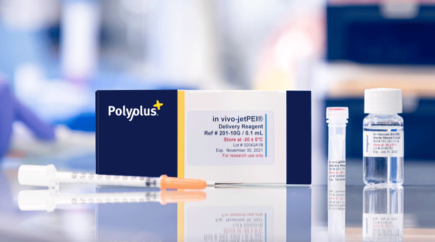in vivo-jetPEI® is a ready-to-use cationic polymer reagent recommended for in vivo transfection of DNA, siRNA, miRNA, shRNA and other oligonucleotide...

When studying a gene function, in vivo studies are essential to validate data collected from in vitro experiments. The most commonly used animal models for in vivo studies are rodents, mostly mice (Mus musculus) and rats (Rattus norvegicus), which present several advantages such as the high similarity of their genome with human genome, but also their small size and their capacity to reproduce fast. However, depending on the functional study to be performed, many different animal models can be used, such as dog, rabbit, minipig, monkey…
One way of studying a gene function is to overexpress it by delivering into the animal a plasmid DNA encoding this gene under the control of a constitutive, tissue specific or inducible promoter. Depending on the injection route chosen, either systemic delivery of the plasmid into the whole body of the animal or local delivery to a specific organ can be obtained.
in vivo-jetPEI® from Polyplus-transfection® offers an easy and efficient method to deliver plasmid DNA into a wide range of animal models through all kinds of administration routes to obtain expression of the gene of interest into different organs.
RNA interference represents a complementary way to study the function of a gene by silencing expression of the gene of interest. This silencing can be achieved by in vivo delivery of siRNAs, miRNAs, oligonucleotides or plasmid shRNAs. Again, this can be performed either in the whole body of the animal model or it can target one specific organ, depending on the administration route chosen.
in vivo-jetPEI® is also perfectly suited to efficiently deliver either systemically or locally siRNAs, miRNAs, oligonucleotides or plasmid shRNAs to different animal models to conduct RNA interference studies in vivo. jetSI 10 mM, another reagent developed by Polyplus-transfection®, is the reagent of choice for local delivery of siRNA into the brain.